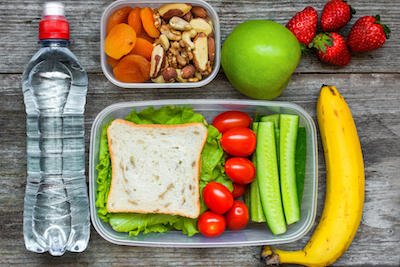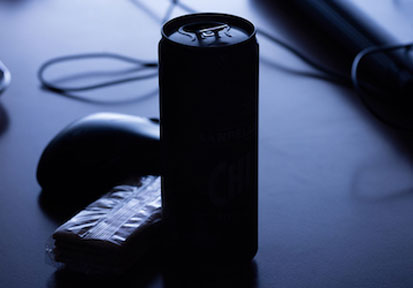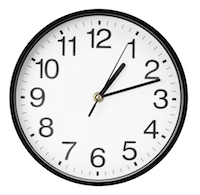What and when you eat can impact your productivity and precision. You can use HPRC’s nutrition strategies to optimize your performance during night shifts.
For some, pulling all-nighters can be fun. For others it’s hard work. Working the night shift requires you to be alert and ready to make precision tactical decisions—often in split seconds. The results could be life or death. This is the reality for night-shift workers in many fields, including military, healthcare, security, and safety and emergency responders. In addition to problems with alertness, it is well established that night-shift workers have an increased incidence of obesity, diabetes, cancer, cardiovascular disease (including heart attack and stroke), and infections, compared to people who don’t work overnight. So, how can you make use of nutrition to help maximize productivity and precision on the night shift without harming your health?
“But night shift doesn’t affect me.” Think again.
Night-shift workers often redistribute their food intake from the daytime to the night hours. However, at night your body digests and metabolizes foods inefficiently, even if you’re awake! This means that eating at night, even if it’s the same food you would normally eat during the day, can have a negative impact on your body. Nighttime nutrition, if done right, can help you cope with the irregular way your body controls blood sugar, cholesterol, hormones, digestion, and immune system responses.
You might be awake, but your metabolism is not
Sleep is a critical time for your body and mind to repair and regenerate. Working the graveyard shift can significantly throw off your normal sleep/wake cycle, or circadian rhythm. Circadian rhythm is a 24-hour internal biological clock controlled by your brain. It cycles between sleep and awake and lets your body conduct key functions related to digestion, cell growth and repair, and keeping your immune system strong. If you change your natural sleep/wake cycle, your body has a difficult time functioning optimally. However, when you eat (feed) and don’t eat (fast) is a key factor that can control how your body adapts to changes in the sleep/wake cycle.
And because shift happens, whether in the field or deployed in place on home soil, Service Members need to be strong, alert, and energized to perform their duties successfully, often across the nighttime hours.
A fairly new field of research looking at circadian rhythms and eating—called “chrononutrition”—helps explain the why, when, and how much to eat during a night shift.
Fuel to thrive on the night shift
When to eat
- Eat early in your shift. Eating smaller meals or snacks earlier in your night shift can make it easier for your metabolism to digest food and use your cells for repair.
- When you eat matters. “So…when do I eat?”
- Breakfast when you get home
- Lunch when you wake
- Dinner before your shift starts
- Light snacks during your night shift
What to eat and drink
 Eat light at night. Science has shown that digestion and metabolism aren’t as efficient at night. Eating less at night can improve alertness and productivity as well as prevent negative health issues.
Eat light at night. Science has shown that digestion and metabolism aren’t as efficient at night. Eating less at night can improve alertness and productivity as well as prevent negative health issues.- Consume high-performance snacks and water throughout your night shift. Choose foods that sustain energy. These include foods lower in fat and higher in fiber and lean protein. Choose fruits and vegetables, 100% juice, whole grains, and protein-rich foods such as hard-boiled eggs, sandwiches made with turkey or chicken, yogurt, cheese and crackers, or a whole-grain muffin with peanut butter.
- Hydrate, hydrate, hydrate. Among many other reasons, proper hydration can actually reduce fatigue and increase mental alertness. Make sure you have water available and sip it throughout your shift. You can choose the right beverage to keep you hydrated.
- A word on caffeine. Small amounts of caffeine, a stimulant, can help mental alertness. For night shifts, try 200 mg (i.e. two 8-ounce cups of coffee) 30–60 minutes before your shift starts. Repeat every 3–4 hours as needed. However, don’t consume more than 600 mg per day (unless it’s sustained operations, where you can have up to 800 mg), and stop intake 4–6 hours before you plan to sleep. Be cautious about consuming popular energy drinks; they contain a lot of caffeine and sugar. Learn more about caffeine safety at Operation Supplement Safety (OPSS).
- The key take-home point. The night shift is not an excuse to snack on junk food or eat a heavy meal at night.
Plan for success
One challenge of night-shift work is often lack of time and appropriate resources to eat nourishing food in the middle of the night. But that’s hardly an excuse if you’re prepared. Whether living on base with limited kitchen resources or skills or in a home with a fully stocked kitchen and spousal help, the following tips can help you maintain maximum alertness on night duty.
- Plan your meals in advance with HPRC’s sample grocery list.
- Bring some extra food with you from the dining facility (either fresh or pre-packaged light meal), the commissary, or home. Choose fruit, yogurt, nuts, cheese, milk, yogurt, or a deli sandwich. Use the Go for Green® guide or these quick-and-easy food ideas.
- Use an insulated lunch bag or cooler with ice packs to keep food fresh and lasting longer.
- Use smart spaces for fueling. If possible, store perishable meals and snacks in a refrigerator or freezer and heat them in a microwave.
- Another option might be to coordinate with your team on a rotating snack schedule. Try purchasing high-performance snacks and water at a local warehouse store. Charge teammates a small monthly fee to cover costs.
- Finally, if vending is your only option, voice your desire to have healthier choices. Vending machines with healthy offerings—with and without refrigeration—are increasingly available at military installations. Refrigerated vending machines contain fruit and low-fat cheese and yogurt. Trail mix, energy bars, and other healthier snacks can be added to the rows of chips and candy bars. You also can ask for fruit and vegetable juices and water to be added to beverage machines, so that caffeinated drinks and soft drinks aren’t the only options at 0300.
Bottom line
The night shift is very much a reality in our 24/7 digital world. The role of the Service Member—even during the day—is challenging, but night-shift work poses additional concerns and threats. Other factors that can impact Total Force Fitness and contribute to optimal performance on the night shift include the amounts of light, sleep, and movement you get. Doing the night shift right can help you optimize performance and minimize your own personal health risks.

